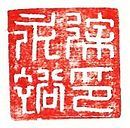andyjeffries
Senior Master
Hi guys,
I just wondered - if it's bad to write a name in red in asian cultures, why are chops (the stamps used on certificates) traditionally done in red?
But do not write a persons name in red ink! It means that you have cut them out of your life or that they are dead. In ancient times the names of the dead were carved in red on tombstones and plaques. Nowadays, Chinese obituaries are traditionally written in red ink.
http://www.fastenseatbelts.eu/en/continent/1/34/Dont-write-a-persons-name-in-red

Seals on Wikipedia
I just wondered - if it's bad to write a name in red in asian cultures, why are chops (the stamps used on certificates) traditionally done in red?
But do not write a persons name in red ink! It means that you have cut them out of your life or that they are dead. In ancient times the names of the dead were carved in red on tombstones and plaques. Nowadays, Chinese obituaries are traditionally written in red ink.
http://www.fastenseatbelts.eu/en/continent/1/34/Dont-write-a-persons-name-in-red

Seals on Wikipedia

